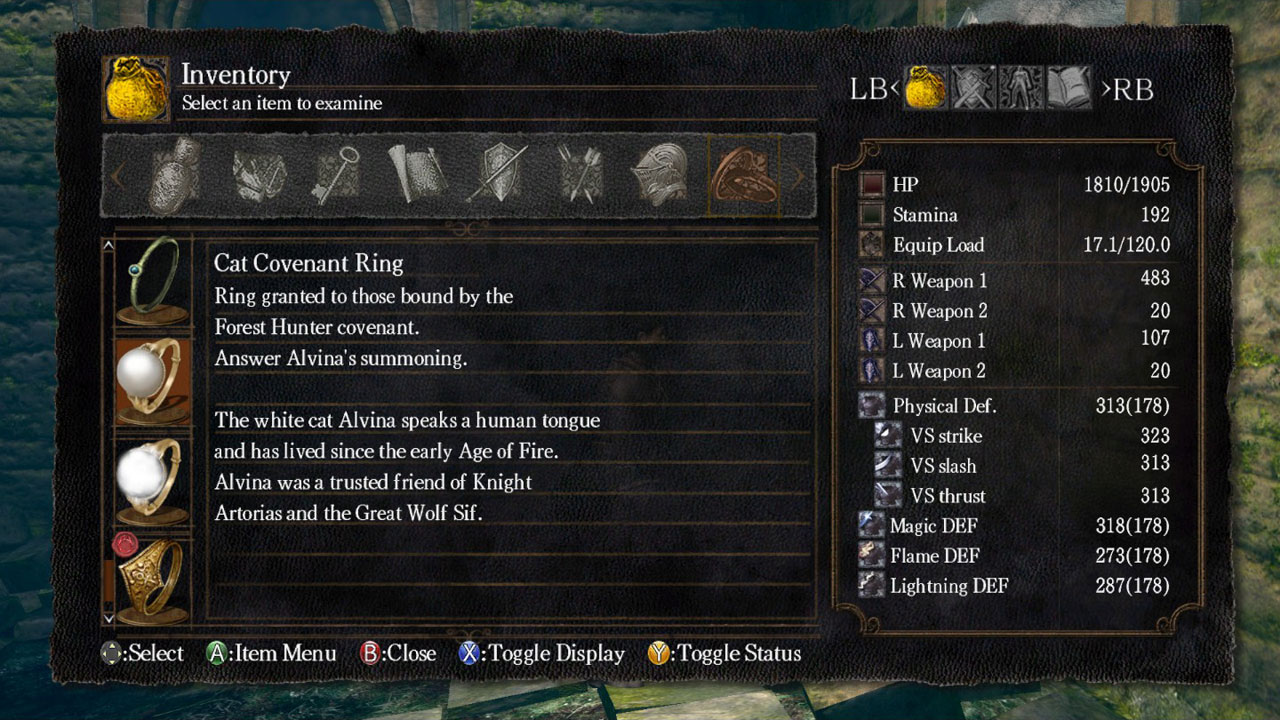Loose threads and general vagueness are often poor crutches in storytelling. These aspects tend to be weird for the sake of being weird, or serve as token springboards for potential sequels, or — worse yet — are indicative of the creator(s)’s lack of a narrative plan, e.g., Lost.
Mystery is inherently alluring, though, and it can also have a fulfilling payoff. The Souls games are a good example of that.
Each title begins with a seemingly disconnected CG intro, and proceeds to thrust the player into a crumbling world with barely an explanation. There are no lengthy expositions, conquests retold over animated world maps, extensive flashback sequences, etc. Instead, whatever pieces of narrative the player puts together are entirely optional and widely scattered about.

A tib-bit mentioned in passing by an NPC foreshadows a gruesome battlefield encountered later in the game. Flavour text accompanying an item hints at a long-standing dynasty and its wealth. Parts of defaced statues allude to an outcast regal heir.
There’s not much of a plot to the player-controlled protagonist, but there’s an incredible sense of depth and history to the setting itself. It’s all very cohesive and consistent, and delivered with understated elegance.
That’s something incredibly rare for a brand new series, but the Souls games actually have something of a 20+ year development history.
From Software’s other games such as Eternal Ring, Shadow Tower, Evergrace, Otogi, and King’s Field contain bits of gameplay and ambiance present in the Souls titles: stamina-draining melee attacks, stat-boosting equipment, sporadically dispersed NPCs, non-linear exploration, item durability and crafting, fog-of-war/dynamic lighting, loading screen and item flavour text, highly destructible environments, “soul”-harvesting progression, etc.
All of these previous games experimented with and revised what’s so confidently delivered in Demon’s Souls and Dark Souls, but the series itself also follows in the footsteps of another older title: Wizardry.

Wizardry’s arrival and subsequent popularity in Japan is fairly well documented, and King’s Field, From Software’s inaugural release, is said to have been closely inspired by the Western CRPG. The interesting part is that Wizardry’s success seems to have come in part due to a shoddy localization. The only clear example of this I can find is a Wikipedia entry that mentions Blade Cusinart — a silly nod to Cuisinart food processors — evoking an aura of alien mythology.
I assume the results were similar with subsequent Wizardry titles, which contained even more pop culture references, but it’s hard to find any concrete evidence of how these were interpreted in Japan. Perhaps someone else could shine a light on the subject?

Regardless, it’s still fascinating to think about how a simple misconception could be taken to an extreme. Many of From Software’s titles found a niche audience and followed their own paths instead of borrowing the homogeneous conventions of their peers; what else could we have seen if a misunderstood production memo or marketing bullet-point was left to evolve in a bubble?
In the end the significance of Wizardy’s Japanese localization might be a bit overstated, but its heritage is certainly evident in the Souls games. They’re positively brimming with relics steeped in a strange, foreign history, and greatly contribute to the series’ unique style.
Yup, Dark Souls had a lot of content that it was up to the player to dig up which worked really well. Didn’t realize that the games took so much from Berserk!